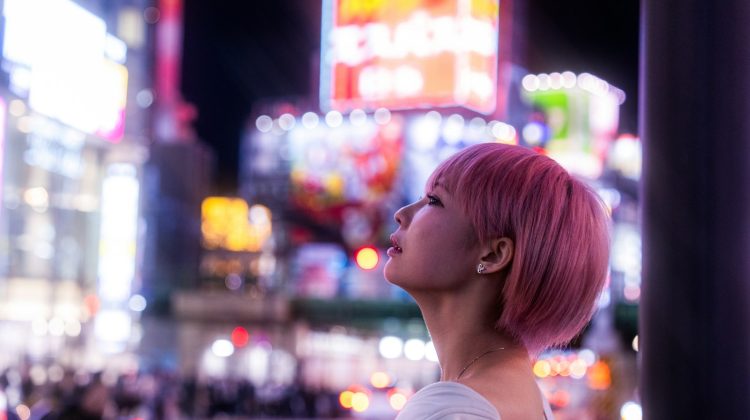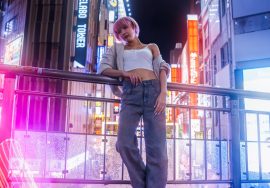
Street Style Evolution: From ’90s Vibes to Modern Looks
Street style is not just a reflection of personal taste, but a dynamic expression of cultural movements, societal shifts, and individual creativity. Over the past few decades, the evolution of street style has paralleled the changing social and political landscapes, with the ’90s marking a pivotal era in fashion history. As the turn of the century ushered in new technological, social, and economic developments, these changes inevitably influenced how people dressed on the streets. Today, street style continues to evolve, constantly adapting to global trends, shifting tastes, and the ever-growing influence of social media. This essay explores the evolution of street style, starting from the iconic looks of the ’90s and tracing how they’ve transformed into the modern styles seen on today’s urban streets.
The ’90s: A Cultural Renaissance of Street Style
To understand the street style evolution, it’s important to first consider the ’90s, an era that radically reshaped fashion culture. The decade was defined by the rise of youth-driven subcultures, as well as the growing influence of hip-hop, grunge, and skate cultures. These movements brought alternative, rebellious aesthetics to the forefront, challenging traditional fashion norms.
The ’90s street style was heavily influenced by music, particularly hip-hop and rock. Artists like Tupac, Biggie, and Nirvana’s Kurt Cobain became style icons, and their influence can still be felt today. Baggy jeans, oversized jackets, flannel shirts, and graphic tees were staples in streetwear, signaling a rebellion against the more polished, structured looks of previous decades. Hip-hop culture, in particular, popularized items like bucket hats, track suits, and high-top sneakers. The influence of hip-hop wasn’t just about the clothing, but also about the attitude: streetwear represented an anti-establishment ethos, a stance that resonated deeply with the youth of the time.
Meanwhile, the grunge movement, led by bands like Nirvana and Pearl Jam, brought a more laid-back and edgy approach to fashion. Flannel shirts, ripped jeans, and Converse sneakers became synonymous with the grunge look. It was a stark contrast to the polished glam of the ’80s, and its influence on street style was immense. The unkempt aesthetic symbolized a rejection of the excess and materialism associated with the decade before.
Skate culture also played a significant role in shaping the street style of the ’90s. Skaters like Tony Hawk and Rodney Mullen helped popularize the laid-back yet functional look of baggy cargo pants, graphic tees, and Vans sneakers. The skateboard became a symbol of freedom, rebellion, and creativity, and its influence on fashion was palpable. Street style became not just about looking cool, but about functionality and comfort, offering a practical yet stylish way of dressing for everyday life.
The Early 2000s: A Shift Toward Logo-Centric and Designer Streetwear
As the ’90s faded into the early 2000s, street style began to evolve in response to the changing fashion landscape. One of the most notable shifts during this period was the rise of logo-centric streetwear. The influence of brands like Tommy Hilfiger, FUBU, and Polo Ralph Lauren reached new heights, as streetwear became more associated with luxury and exclusivity.
The early 2000s saw the rise of the “bling” culture, where oversized jewelry, flashy logos, and bright colors took center stage. Hip-hop artists like Jay-Z, Lil Wayne, and Pharrell Williams embodied this era of fashion, often sporting luxury brand collaborations alongside streetwear staples. The integration of designer labels into street fashion marked a turning point, where the lines between high fashion and street style began to blur. This was the era of the iconic “street luxury” look, characterized by items like oversized sunglasses, logo-heavy tracksuits, and designer sneakers.
Simultaneously, the “athleisure” trend began to gain momentum, with tracksuits, sneakers, and sporty accessories becoming more mainstream. Brands like Nike, Adidas, and Reebok became synonymous with streetwear, signaling a departure from the more grunge-inspired looks of the ’90s. Athleisure, with its focus on comfort and performance, laid the groundwork for the more functional aspects of street style that would dominate the 2010s.
The 2010s: Street Style Goes Global and Digital
By the 2010s, street style had undergone another significant transformation, fueled by the rise of social media and the global influence of fashion bloggers and influencers. Platforms like Instagram, Tumblr, and YouTube allowed individuals to curate and share their personal styles, democratizing fashion and giving rise to a more diverse range of streetwear looks.
The decade also saw the continued rise of luxury streetwear collaborations, with high-fashion houses like Louis Vuitton, Balenciaga, and Gucci partnering with streetwear brands such as Supreme and Off-White. This fusion of high-end and street fashion was emblematic of the 2010s, where exclusivity and accessibility met in a way never seen before. Supreme, in particular, became a household name in streetwear, with its limited-edition drops and collaborations creating a culture of scarcity and demand.
At the same time, the “normcore” trend emerged as a reaction to the over-the-top nature of luxury streetwear. Normcore embraced plainness, celebrating the beauty of simple, utilitarian clothing. Items like white sneakers, denim jackets, and crewneck sweatshirts became wardrobe staples, allowing individuals to embrace a more minimalist, low-key aesthetic. This era was marked by an embrace of casual, everyday fashion, with many individuals seeking authenticity and comfort over ostentation.
The 2010s also saw the emergence of “street style influencers,” with individuals like A\$AP Rocky, Virgil Abloh, and Kanye West becoming central figures in the global streetwear scene. These figures shaped not only the fashion choices of their followers, but also the way street style was perceived by the wider world. Social media amplified street style’s influence, and soon, what was once seen as a subculture became mainstream.
Modern Street Style: Digital Influence and Sustainability
In the 2020s, street style has continued to evolve, shaped by both global and local influences. One of the most significant changes in recent years has been the growing focus on sustainability and ethical fashion. As climate change and environmental issues have become more pressing, consumers have become more conscious of the impact their fashion choices have on the planet. This shift has led to an increased demand for sustainable streetwear brands that prioritize ethical production methods and eco-friendly materials.
Another key development in modern street style is the continued dominance of digital culture. Platforms like TikTok and Instagram have allowed for even more immediate, viral trends to emerge. Influencers, celebrities, and everyday individuals now have the ability to create and share street style looks in real-time, accelerating the pace at which trends evolve. Modern street style is more eclectic than ever, with an emphasis on individuality and personalization. It’s not uncommon to see people blending elements from multiple decades, combining ’90s nostalgia with contemporary trends or mixing luxury and fast fashion to create something entirely new.
Furthermore, the rise of virtual fashion and augmented reality is pushing street style into the digital realm. Virtual influencers and fashion avatars are now a part of the landscape, showcasing futuristic, digital-only outfits on social media platforms. While these trends are still in their infancy, they hint at a future where street style may not just be something that exists in the physical world, but in the virtual one as well.
Conclusion: The Ongoing Evolution of Street Style
From the baggy jeans and oversized jackets of the ’90s to the digital-forward, sustainable streetwear of today, street style has undergone a profound transformation. What started as a subcultural expression of youth rebellion has become a global phenomenon, influenced by music, art, social media, and political movements. Street style has evolved from being purely about comfort and rebellion to becoming a nuanced, multifaceted form of personal expression that reflects a diverse range of cultural influences.
As street style continues to evolve in the digital age, it will undoubtedly continue to be shaped by new technological developments, sustainability concerns, and shifting cultural attitudes. What remains constant, however, is the underlying ethos of individuality, creativity, and the desire to challenge the status quo. Whether it’s the ’90s influence, the rise of logos, or the digital frontier, street style remains a dynamic, ever-evolving expression of the times we live in.








